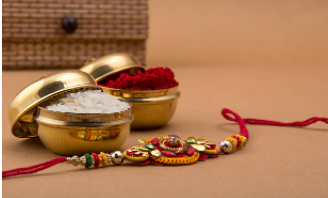Why you should be making plans to visit South Korea
One of the struggles of being in a lock down is not having the freedom to just pack our bags and travel to a distant country. But, as we remain at our homes, we can let our minds do the travelling by reading up on places worth visiting. As a first stop, let’s take a look at South Korea and see why it’s worth adding this country to the list of places to go.I have multiple reasons for choosing South Korea. First of all, I really envy their high-speed internet and the speed of the railway network. Secondly, the range and quality of Korean beauty products bowls me over every single time I look at it. And who doesn't love Korean shows! Their movies, TV series, and music are so popular that they actually have a term for its rise in popularity, called the Korean Wave (Hallyu). Fascinating, isn't it?
While these are good enough reasons to visit any place, the truth is that a chance encounter with a few Koreans in another country made me fall in love with their cuisine. As a firm believer in the idea that culture is best experienced through food, I hope to introduce South Korea to you through some popular dishes.
It’s time to brush up on chopstick skills
South Korean cuisine is similar to most Southeast Asian countries with its staple of rice, noodles, vegetables and meat. A notable aspect, however, of a typical Korean meal is the number of side dishes (banchan) that is guaranteed to make any Indian heart glad. Interestingly, some of their side dishes is easily found in stores, which reduces the time needed to put a meal together.If you ever happen to pop into a Korean store, you will notice a colorful range of chips, biscuits, wafers, yogurt, chocolates, pickled food and banchan. The flavours and combinations of some of these items are very bold and it would be a crime not to try it at least once. Koreans are serious about their ramen. It is said that there are more than 100 varieties of ramen available. And some of them can be really spicy too! Noorongi, which is toasted rice found at the bottom of a pan, is another unique food item commonly found in shops. With just the addition of hot water, garlic, meat, or vegetables, you can create a hearty soup in no time. The stores also carry a variety of chili and soybean pastes like Gochujang, Doenjang, or Ssamjang, which can be added to soups, porridge, or stews.
Earning a Korean stamp on your culinary passport
South Korean cuisine is generally considered healthy, so be prepared to eat guilt-free if you decide to visit a Korean restaurant. When it comes to popular dishes, names such as Bulgogi, Bibimpap, Japchae, Gyeranjjim, and Ddukbokki will quickly come up in any discussion or search on the internet. But as you can imagine, there are so many more dishes that are an absolute delight to the palate. Since taste palates differ from person to person, I have decided to present four dishes, ranging from spicy, savoury to sweet, that got me hooked onto this cuisine.Kimchi

Fermenting food is a very common process in the South Korean food culture. Kimchi, a national dish, and a staple at most homes, is a delectable product of this process. All you need is some fermented Chinese cabbage or radish and to that add a mix of chili powder, garlic, ginger, red pepper, sugar, and sauces of different kinds. This spicy, flavorful dish is the perfect accompaniment to any meal. Although, to be honest, it is very tempting to make an entire meal out of kimchi.
Traditionally, this dish was prepared by the whole community during the start of winter. The final product was then preserved in large pots and shared with others. These days kimchi is readily available in stores. Locals say that there are about 200 varieties of kimchi. Visitors to Korea can witness the kimchi-making process at an annual festival held in early November. You can see people turn out in large groups to make different varieties and share their knowledge in a bid to keep the tradition alive. The kimchi made during the festival is then donated to families that cannot afford to make or buy the dish.
Gimbap/ Kimbap

As traveling got more affordable, it brought about a revolution in the food scene. This meant that a person could enjoy sushi without ever setting foot in Japan. Now, gimbap is the Korean answer to the Japanese sushi and is, in all honesty, just as amazing in taste. The name gimbap literally translates to rice wrapped in seaweeds. The ingredients for gimbap include nori seaweed, steamed rice, pickled vegetables, kimchi, and meat. The seasoning is what sets gimbap and sushi apart. Koreans use sesame oil to season the rice, which gives it a distinct flavor.
Making a perfect looking gimbap is a skill that needs precision and patience. After laying out dried nori seaweed, rice, and the other fillings on a bamboo mat, the gimbap is tightly rolled and then sliced into bite-sized pieces. What is great about this dish is that it is the perfect food for a day spent outdoors and Koreans are known to make this dish for picnics and outings.
Songpyeon (Rice cake/ Tteok)

Songpyeon has been a part of the Korean culture for a long time and is usually prepared during Chuseok or harvest moon holiday. Shaped like a half-moon, it stands for good wishes, abundance, and prosperity. This tteok or rice cake is made with rice powder and a choice of beans, chestnuts, dates, sesame seeds, and honey. Songpyeon, which means pine cakes, derives its name from the process of steaming the cake over pine needles, which adds a flavor of pine trees to the cake.
The reason this dish stands out in my memory is because of its colorful, shiny, and smooth exterior. It has a nice chewy texture and a deliciously gooey center. The colors used in this cake are generally from natural ingredients. For those watching their sugar intake, this is the perfect dish to go for since it is not overly sweet. At least in my memory!
Ggae chal bbang (Sesame Mochi Bread)
Going by the posts on social media, it is safe to assume that most of us are becoming proficient at baking bread during this lockdown. Now, thanks to South Korea, we are introduced to another yummy variant called the Sesame Mochi Bread. As the name suggests, this bread is made with tapioca flour (or mochi) and toasted sesame seeds. This small circular bread is surprisingly airy and slightly chewy in texture. What makes it even more appealing is that there is no sugar in this bread. Sesame mochi bread is quite popular and is a must-have if you happen to pop into a Korean bakery. An instant bread mix is available in Korean stores for people who wish to bake this bread at home.Hotteok

Hotteok is a popular street food in South Korea. Shaped like a thick, circular disc, it is deliciously crunchy on the outside and gooey on the inside. The traditional version is made with fermented dough that is filled with brown sugar, honey, cinnamon, and pieces of crushed nuts. Despite being high in sugar content, this is one dish I would choose over and over again. What I love about hotteok is that it uses simple ingredients that you would find in any Indian pantry. So, here is a simple recipe on how to make hoetteok.
For the dough you'll need:
- ¾ cup plain flour
- ¼ cup warm milk
- ½ teaspoon active dry yeast
- ½ teaspoon sugar
- Pinch of salt
- 3-4 tablespoons jaggery
- 1 tablespoon crushed peanuts
- 2 teaspoons cinnamon
- Mix the ingredients for the dough in a bowl and knead the dough gently. Make sure you activate the yeast in a little warm milk for 10 mins before adding it. Keep the dough covered for an hour until it doubles in size. Knead it again and let it rise for 20 minutes more
- With a little oil on your hand, divide the dough into four small balls.
- Mix the ingredients for the filling in a separate bowl
- Flatten each dough with your hands, add a spoonful of the filling in the center and close the edges to make it a smooth ball again
- On a heated pan, brush a little oil and place the filled-in dough. Using a spatula, gently press the dough down until it flattens without the filling bursting out. Flip and cook on both sides. Enjoy hotteok while it is hot.
Exposing ourselves to images and words of distant lands can actually transport us far beyond our current surroundings. And I hope this introduction to South Korean cuisine does that for you. Who knows, when it is safe and legal to travel again, South Korea just might top the list of countries to visit.
Next stop, Lebanon!











